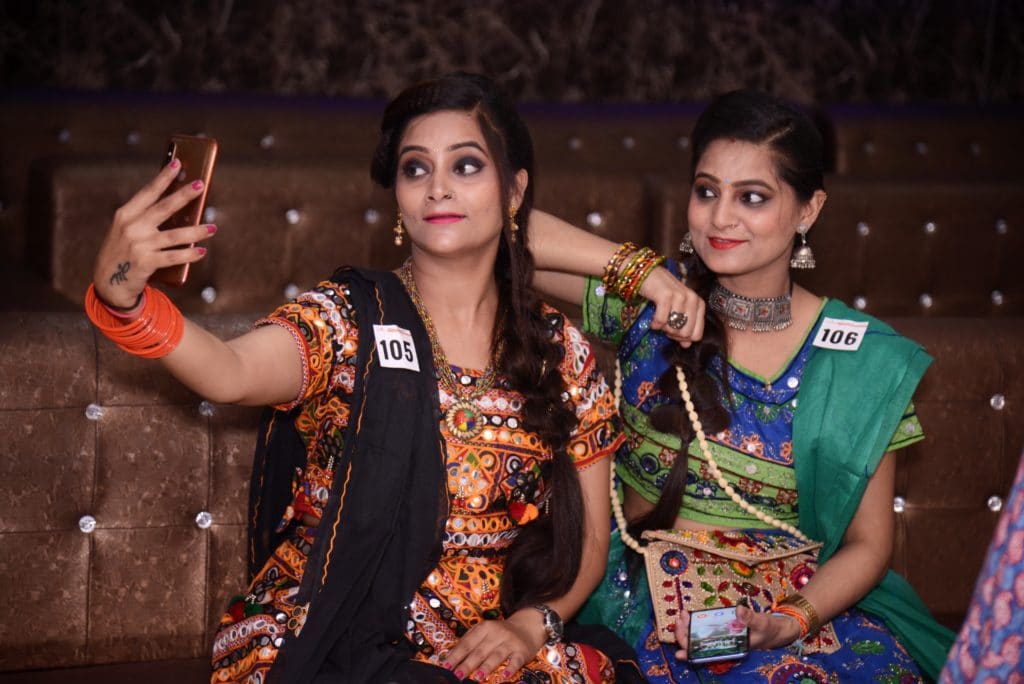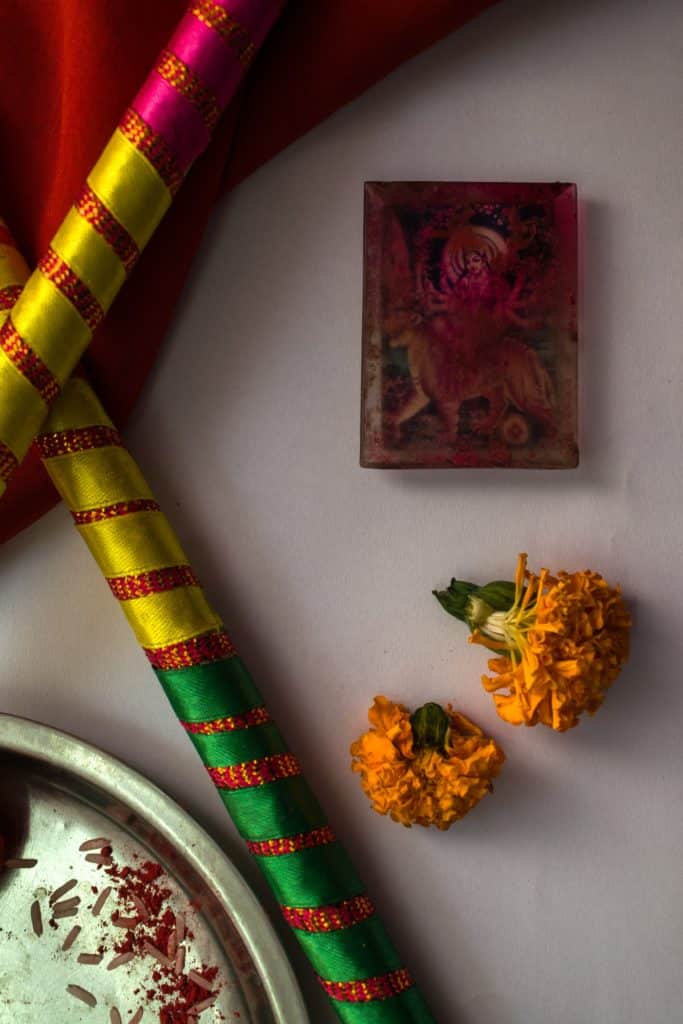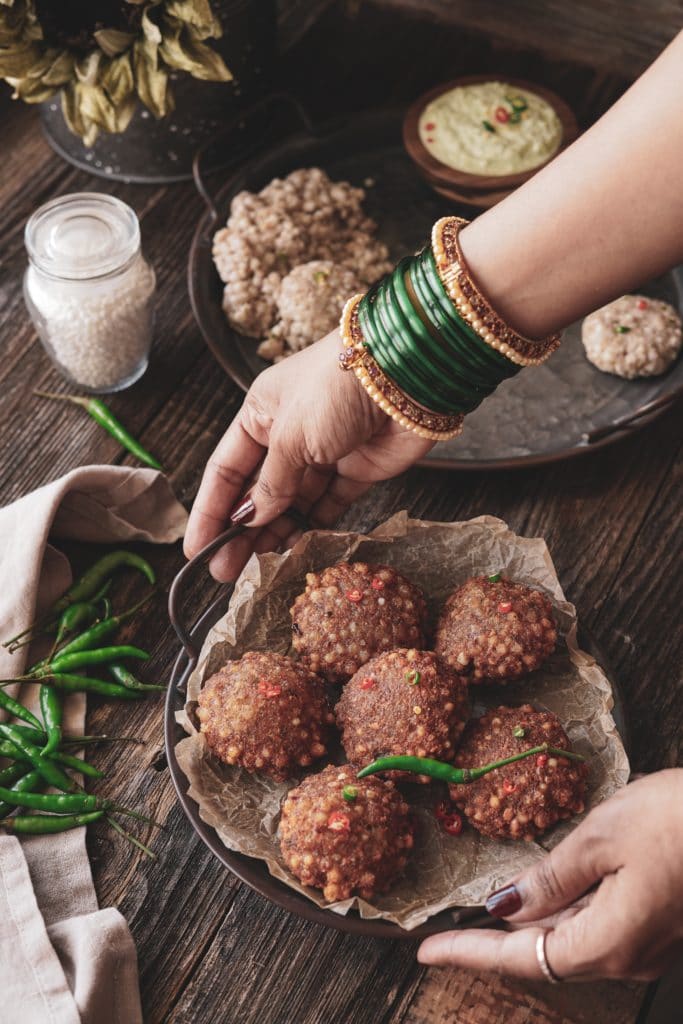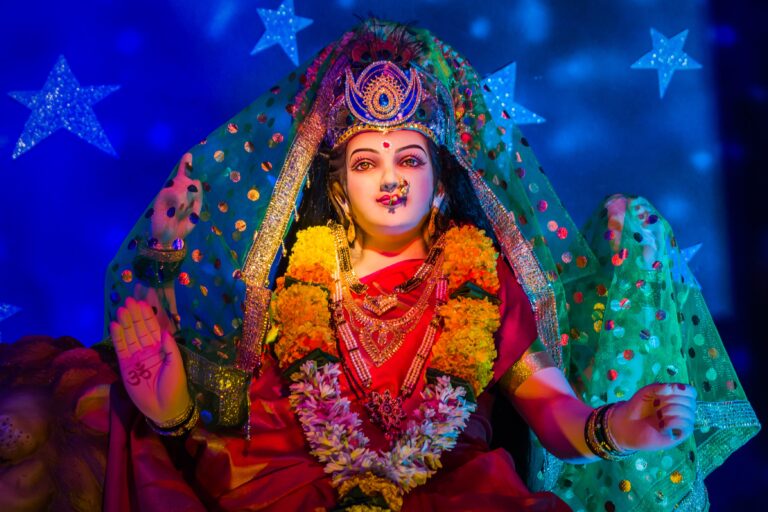Dussehra is fast approaching, meaning it’s time to break out the sweets and dust off your dandiya raas. Or if you’re Bengali, you might be browsing for the perfect new sari or salwar kameez to wear during Durga Puja.
As one of the most important Hindu festivals of the year, Dussehra is a joyous celebration that signifies the triumph of good over evil. And no matter how you choose to mark the occasion, it can be one of the most social times of the year.
After all, you have Navratri and Durga Puja culminating in Dussehra, then Diwali not even a month later. And if you’re from Maharashtra, you probably just celebrated Ganesh Chaturthi. It’s hard not to feel festive when there are so many traditions to indulge in.
To prepare for the holiday season, we decided to do a deep dive into not just how you can celebrate Dussehra abroad, but also why we observe the holiday in the first place.
What is the story of Dussehra?
Dussehra, also known as Dasara or Vijayadashami, is linked to the fierce battle between Lord Rama and the demon king of Lanka, Ravana, who had stolen Sita and held her captive in Lanka. In this story, by Rama. The festival comes from the Sanskrit words dasha meaning ten and hara meaning defeat and is celebrated on the 10th day of the month of Ashvina usually falling in September or October.
However, that isn’t the only story around the holiday.
Dussehra is ushered in by the appearance of a full moon and coincides with the Navaratri and for those in West Bengal, Durga Puja festivals. Navratri is a celebration of the divine feminine principle or shakti. For many people in India, it is a time for fasting and reflection along with festivities that focus around the goddess Durga. It commemorates her defeat of the buffalo demon Mahishasura.
Related reading: Dashain Guide: Celebrations, History, and More
Why is Dussehra celebrated after Navratri?
With the diversity of thought and ritual across India, it’s no surprise that there are several perspectives about why Dussehra is celebrated after Navratri. But a common thread between most of them is the intersection of Navratri, Durga Puja, and events from the Ramayana.
Navratri and Durga Puja both celebrate the victory of the goddess Durga over the demon Mahishasura. At the same time, we hear the story of how Ram defeated the ten-faces of the demon king Ravana after a long journey.
In both cases, Dussehra is about good overcoming evil. Dussehra is meant to signify the end of that battle, which is why it is celebrated after Navratri – no matter which version of why you prefer.
Why is Diwali celebrated 20 days after Dussehra?
After Rama won against Ravana and recovered his wife, he was able to return from his exile to the Kosala Kingdom. That is the reason we celebrate Diwali, his return, 20 days after Dussehra.

How is Dussehra celebrated in India and Nepal?
There are various stories related to Dussehra and how it’s celebrated depends upon the different regions in India.
For example, in Northern India people incorporate Ramlila, a theatrical enactment of Rama’s life story. At night effigies of Ravana, his son Meghnada, and his brother Kumbhkarana are stuffed with fireworks and set ablaze in an open field.
Bengalis observe Bijoya Dashami, which marks the 10th day of Durga Puja. Leading up to Dussehra, artists create elaborate representations of Maa Durga or Maa Kali in all styles, from traditional crafts to modern renditions. On the final day, observers carry their idols of the goddess in processions and immerse them in the river. In these parades, women smear each other’s faces with vermilion.
In South India, the festival is celebrated in honor of the goddess Saraswati, the Hindu goddess of knowledge and arts. Worshipers clean the instruments and ask the goddess for blessings. In particular, Mysore in Karnataka is said to get its name, Mysuru, from the Durga slaying the buffalo demon. The Viyajadashami celebrations here are extremely large, and in the past, have included elephant processions.
In Western India, such as Gujarat, people fast and worship Durga’s nine avatars in the nine days leading up to Dussehra. You’ll often find women and children performing garba or dandiya dances across Gujarat and Maharashtra, usually around clay pots, but bonfires or other structures aren’t uncommon, especially at larger commercial celebrations. On the 10th day, Maa Durga’s idol is immersed in water, which signifies her return to Mount Kailash with Shiva.
In Nepal, Dussehra is known as Dashain and is the longest Hindu festival in Nepal. It is celebrated over two weeks with prayers and offerings to Durga. Nepalis use it as a time to gather with family and exchange gifts and blessings.
And since Dussehra does kick off the holiday season, you are likely to see large outdoor fairs scattered around the cities as well.

How can I celebrate Dussehra abroad?
Outside of fasting, performing puja, and crafting sweets at home, and introducing your children to the classic Amar Chitra Katha versions of the holiday, there are many things you can do to observe the Dussehra holiday.
Finding Dussehra celebrations in the US, UK, Canada, and Australia
Depending on where you live outside of Nepal and India, you can likely celebrate Dussehra at your local temple or with your Hindu community. You may also want to check in with student groups at your local university to see if they are planning a celebration on campus.
Dussehra celebrations in most countries can range from small, local pujas to large fairs. In some cases, the local Indian community may have an “Indian Fest” that overlaps with Dussehra or Diwali.
For home celebrations, you can usually get everything you need to celebrate from your local Indian or international market, the Patel Brothers for US expats, or Indian Punjabi Bazaar for those in Canada. You can also use the regional version of Amazon or Etsy to find anything else you may need.
Virtual Dussehra from your home
Even before COVID-19, celebrating Dussehra away from friends and family was difficult. The good news is, there are ways you can share the festive spirit with those you love, whether they’re across the city or across the globe.
Tip 1: Prepare yourself and your space
Start by cleansing your home and decorating it with symbols of Rama and Durga. Next, select special clothing. Dressing up can elevate our mood and put us in the frame of mind for celebration. Even if you have no intention of going out or joining others, this can still be a time for you to feel special.
Tip 2: Eat well and enjoy smaller pujas
No festival is complete without the right food. Think of your favorite delicacies and make them. If you are living with other family members, you can all join in the process and make it a fun, family event.
You can perform small pujas as a family, too, and perform immersions in-house. Depending on the customs of your family, you may also want to fast during this time.
Tip 3: Connect with family
Set up a family video chat with Skype or WhatsApp and connect with relatives from across the globe. You may need to arrange a suitable time beforehand, but you can perform puja together, share recent news, or even watch movies together.
You can also surprise your family with gifts through using online storesplatforms like Amazon India, Flipkart, or other online providers. And of course, you can gift money, too.
Just because your loved ones are far away doesn’t mean you can’t have fun together.
Tip 4: Get creative
Have a movie night and watch Dussehra-themed movies or documentaries. Some other fun ideas include:
- Performing garba or dandiya;
- Creating pinata-sized effigies of Ravana, Meghnada, and Kumbhkarana to be destroyed;
- Helping your children act out scenes from the Ramayana; or
- Designing a sculpture, painting, or piece of music to share with friends and family.

How Can Wedding Traditions Around the World Influence How Dussehra is Celebrated Abroad?
Dussehra celebrations abroad often blend local customs with Indian traditions, creating a rich tapestry of cultural exchange. By exploring global wedding traditions beautifully, the festivities can incorporate unique rituals, attire, and cuisines, enhancing the experience. This fusion reflects the vibrancy of diverse cultures, making Dussehra a truly international celebration.
Send your family a gift this Dussehra
Finding the right gift from abroad can be difficult, and shipping can be a pain, too. But you can always send money back to your friends and family so they can celebrate Dussehra with style.
At Remitly, we provide a fast and secure way to send money to India and Nepal any time of year. As of this writing, you can deposit your funds to India right into a bank account, UPI, or via cash pick-up. And you can track your money at every step in the process. Visit the website or download the app, and we’ll show you how to get started.

